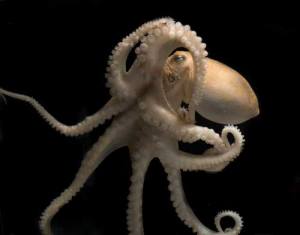 The study, led by Joshua
The study, led by Joshua
The research builds on the scientists’ prior discovery that squid display an extraordinarily high rate of editing in coding regions of their RNA — particularly in nervous system cells — which has the effect of diversifying the proteins that the cells can produce. (More than 60 percent of RNA transcripts in the squid brain are recoded by editing, while in humans or fruit flies, only a fraction of 1 percent of their RNAs have a recoding event.)
In the present study, the scientists found similarly high levels of RNA editing in three other «smart» cephalopod species (two octopus and one cuttlefish) and identified tens of thousands of evolutionarily conserved RNA recoding sites in this class of cephalopods, called coleoid. Editing is especially enriched in the coleoid nervous system, they found, affecting proteins that are the key players in neural excitability and neuronal morphology.
In contrast, RNA editing in the more primitive cephalopod Nautilus and in the mollusk Aplysia occurs at orders of magnitude lower levels than in the coleoids, they found. «This shows that high levels of RNA editing is not generally a molluscan thing; it’s an invention of the coleoid cephalopods," Rosenthal says. In mammals, very few RNA editing sites are conserved; they are not thought to be under natural selection. «There is something fundamentally different going on in these cephalopods where many of the editing events are highly conserved and show clear signs of selection," Rosenthal says.
The scientists also discovered a striking
«The conclusion here is that in order to maintain this flexibility to edit RNA, the coleoids have had to give up the ability to evolve in the surrounding regions — a lot," Rosenthal says. «Mutation is usually thought of as the currency of natural selection, and these animals are suppressing that to maintain recoding flexibility at the RNA level.»
Rosenthal and colleagues at the MBL are currently developing genetically tractable cephalopod model systems to explore the mechanisms and functional consequences of their prolific RNA editing. «When do they turn it on, and under what environmental influences? It could be something as simple as temperature changes or as complicated as experience, a form of memory," he says.
Source: http://www.mbl.edu/blog/smart-cephalopods-trade-off-genome-evolution-for-rna-editing/


